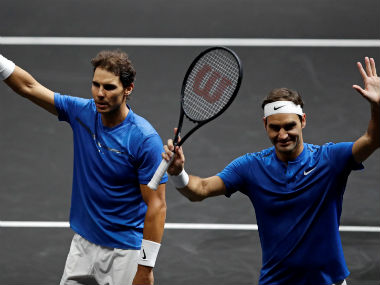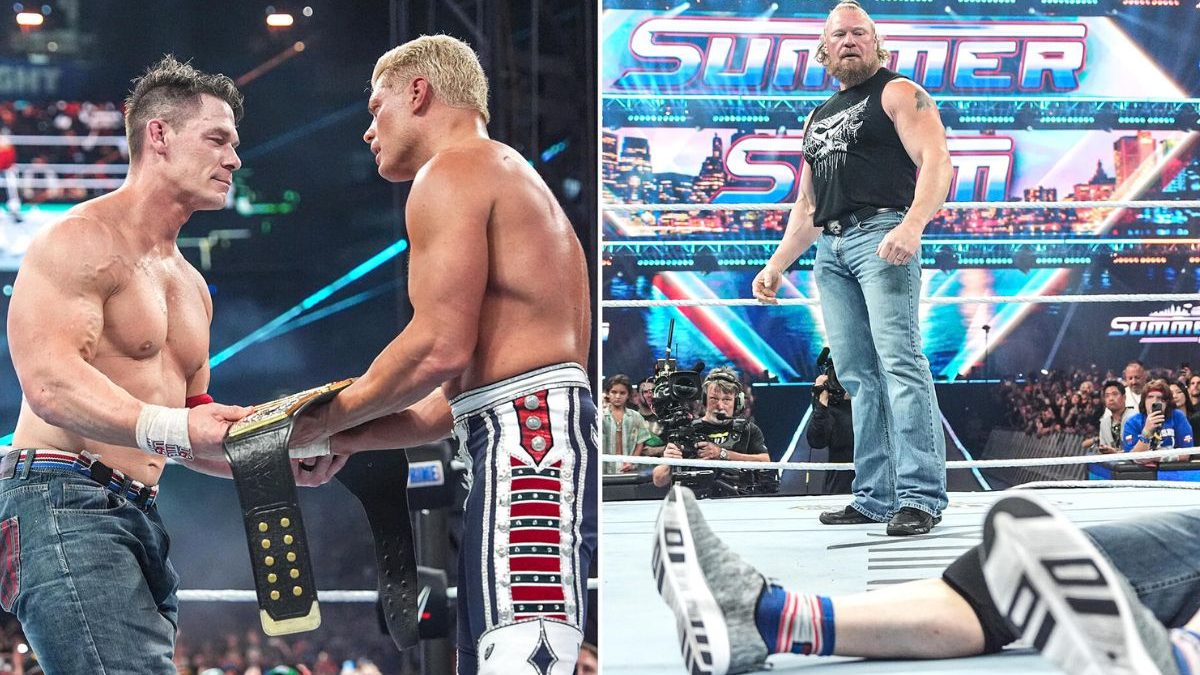It’s a ritual that has started seeming as old as time itself. The draw for a tournament is released, and everyone pencils in a potential Roger Federer vs Rafael Nadal clash as the presumptive match of the tournament – no matter what kind of form or shape they may be in. For one glorious moment, all the names in the draw-sheet disappear, and only those of Federer and Nadal remain; nothing else in the world matters except ‘Fedal’.
The arrival and eventual rise to supremacy of Novak Djokovic have made Federer-Nadal clashes less significant over time, but the sentiment has remained intact. 15 years after the two GOAT candidates first crossed swords in Miami, their rivalry remains the most compelling story in tennis, and one of the most compelling in all of sport.
[caption id=“attachment_4642951” align=“alignleft” width=“380”] Rafael Nadal and Roger Federer will meet for the first time in 16 months at Indian Wells in a semi-final. Reuters[/caption]
What makes the Fedal rivalry so special? It could be the weight of history – you almost never see a match between two players occupying the top two spots in the list of all-time Slam winners. It could also be the contrast of styles – righty vs lefty, aggressor vs counterpuncher, ice cold artistry vs red hot determination. Or it could be the accumulated emotion from the string of epic battles the two have waged over the years, from Miami and Wimbledon to Melbourne and Shanghai.
To my mind, the thing that makes Fedal such a unique and treasurable phenomenon is that even 15 years later, we can’t immediately put our finger on the single most irresistible aspect of their rivalry. We shouldn’t have to ask ourselves what makes Federer vs Nadal special; if we are still asking it, the question itself is the answer.
Impact Shorts
More ShortsWhen the Indian Wells draw was released last week it looked a bit like ‘Djokovic and the rest’, but there was a sentimental spot reserved for the potential Federer vs Nadal semi-final match, just for old times’ sake. We knew they would be playing for the consolation prize, but it was a consolation prize worth first-class bragging rights.
Now that Djokovic has been knocked out, the Fedal semi-final has become the de facto final in most people’s heads. And the two men have played like prohibitive favorites all through the tournament, reaching the last four stage without dropping a set.
Federer dispatched Hubert Hurkacz in two fairly straightforward sets on Friday, while Nadal got past Karen Khachanov in two tiebreakers. But the Spaniard’s long-ish match against Khachanov means he has been on the court a couple of hours longer than Federer overall.
That may prove to be significant, because Nadal seemed to have picked up some sort of knee issue midway through the second set. His movement seemed compromised for a few games before he summoned his best back-to-the-wall tennis to complete the win, and he now has less than 24 hours to recover.
In his press conference later Nadal said that he hopes to be ready for the match against Federer. But he added an ominous warning by saying, “I cannot guarantee how I gonna wake up tomorrow.”
How much of a factor will Nadal’s knees be in the match? It’s tough to say at this stage, but considering the overall nature of their rivalry, Federer will take any advantage that he can get his hands on.
We all know the stats: Nadal leads the overall head-to-head 23-15. We also know the usual dynamic of their matchup: the lefty topspin forehand has traditionally been too vicious to handle for Federer’s one-handed backhand.
Federer fans will be quick to point out that the Swiss has flipped the script since 2015, having won all five of their encounters since then – three of them in straight sets. And while the first of those five wins could have been attributed to the fact that they were playing on an indoor court in Federer’s home town, the last four have been statement-like in their authority.
Something changed in that feverish fifth set of the 2017 Australian Open. Federer’s backhand, always such a punching bag for the Nadal forehand, suddenly acquired a venomous quality that had never been seen before. Taking the ball early and smacking it for winners at will, Federer robbed the Spaniard of his tried-and-tested go-to plan – and he continued in the same vein over the next three matches they played that year.
But that was more than a year ago. As Federer himself said on Friday, “A lot has happened in the past 18 months. You can’t just copy and paste and play exactly the same thing again.”
The backhand has certainly not been a copy-paste version of the 2017 one lately. Federer has struggled to generate pace off it since the start of 2018, and has started resorting to the slice a lot more. Many fans have even resigned themselves to the idea that Federer’s ‘neo backhand’ of 2017 was a one-season thing, never to be seen again.
Of even greater concern for Federer is the forehand, which has recently shown an alarming tendency to go off the boil without warning. While it has behaved itself for the mostpart this tournament, it has by and large become less of a safety net for the Swiss and more of a streaky weapon. Keep hitting the ball deep enough to Federer’s forehand, and an error will come along sooner or later.
You get the gist: Federer is visibly declining with age, and is far less consistent with his groundstrokes than he was in 2017. But what he’s still doing remarkably well is taking the ball on the rise and following it into the net. His attacking approach has helped him keep his opponents off-balance even on the slow courts of Indian Wells, and to defeat Nadal he’d have to be just as aggressive with his shot-making, if not more.
From Nadal’s perspective the blueprint has changed a little, but the target-the-backhand strategy will still play a key role. The 32-year-old has been standing much closer to the baseline this year than he was in 2017, which means he can do to Federer what Federer does to his opponents: rob him of time. That will be especially useful if Nadal can keep pushing the Swiss into his backhand corner, and keep making him play one extra shot – which would invariably lead to either an error or a short ball.
Does Nadal have enough confidence right now to take advantage of those short backhands? In other words, can he finish enough points with the down-the-line forehand hit on the rise?
Through his first four matches here his forehand has been very good, but it was also good through the first six matches of the Australian Open this year before it came crashing down in the final against Djokovic. Nadal needs to ensure that he plays clean, but also with conviction; while his safe crosscourt forehand will keep him afloat in the match, it is only the relatively unsafe down-the-line one that can give him an emphatic win.
He cannot afford to be too conservative with his crosscourt patterns, or make too many errors when he goes down-the-line – both of which he was guilty of against Djokovic.
The match might essentially come down to a battle of court positioning. As long as Federer remains rooted to the baseline, half-volleying shots into the corners, he will be well-placed to make it six wins in a row. Nadal’s task will be to push Federer off the baseline, and make his own foray up the court – before breaking open the point with a big forehand.
The slowness of the court should theoretically help Nadal, but Federer actually leads 2-1 in the matches they’ve played at Indian Wells. The thinness of the desert air makes the ball travel just that tiny bit quicker, and the Swiss has usually been good enough to pounce on that slight advantage and boss the proceedings. His 6-2, 6-3 win in 2017 is widely considered his most dominant showing ever against a fully-fit Nadal.
The term ‘fully-fit Nadal’ has been a huge factor over the last decade and a half, and it will be the same on Saturday afternoon. For the 39th time in tennis history, two legends will stare down each other for the right to register yet another imprint on their road to immortality, and we can only hope that they are both able to give their best.
It’s been 16 months since the last Fedal clash – the second longest gap in their rivalry – but our ritual of marking down the matchup as the ultimate expression of tennis hasn’t changed one bit. How about one more epic battle then, just for old times’ sake?
Prediction: Federer to win in three sets


)

)
)
)
)
)
)
)
)



